That garden soil test result in your inbox can feel overwhelming, but it’s actually your roadmap to a healthier, more productive garden.
Why test your garden soil
A garden soil test is like a seasonal checkup. It reveals what’s happening beneath the surface so you can feed your plants accurately - and avoid wasting time or money on excess nutrients plants don’t need.
Understanding pH, nutrient levels, organic matter, and more will help you grow a healthier garden where every seed has the best chance of succeeding.
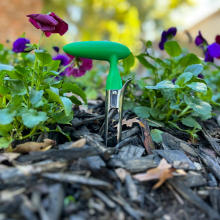
Sunday Garden Soil Test Kit & Analysis
- State-of-the-art lab analysis
- Tests 15 garden soil metrics
- Results within 3-4 weeks
- Everything you need in one kit
What your garden soil test tells you (and what it doesn’t)
A Sunday garden soil test covers:
- Organic matter - helps with water retention and soil structure
- Soil pH - whether it’s acidic, neutral, or alkaline
- CEC - how well your soil holds water and nutrients
- Essential nutrients - like N-P-K and some secondary nutrients
This kit does not diagnose garden pests, disease presence, or drainage issues.
Sunday Tip:
Scout your garden for pests regularly, and make sure you’re watering your garden correctly to avoid any disease potential or drainage problems
Decoding your Sunday garden soil test results: a beginner to advanced guide
Organic matter: your soil’s foundation
Organic matter in your soil is full of life. It improves water retention, fosters beneficial microbes, and steadily releases nutrients over time.
- If your soil test reveals low organic matter: Add compost or shredded leaves to build it up. Soil Boost further enriches your soil by supplying beneficial microbes that help support plant growth.
- If results show healthy organic matter levels: You’re on the right track. Maintain regular feeding and soil amending to keep soil active and healthy.
Sunday Tip:
Shredding or mulching leaves into your garden's soil bed helps this organic matter break down faster, enriching your soil with nutrients sooner.
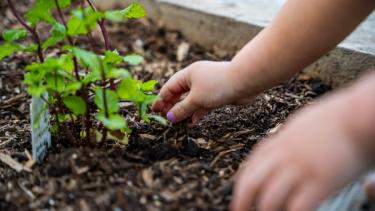
Understanding pH: your soil’s nutrient gatekeeper
Soil pH impacts how easily plants can absorb nutrients. Most gardens thrive in a slightly acidic to neutral range, though some, like blueberries or azaleas, prefer more acidic conditions.
- If your soil is on the acidic side: Acid-loving plants will be happy, but most other plants may need a boost from WonderFert until pH is adjusted (if needed at all).
- If your soil is around the ideal range: You’re in the sweet spot for most veggies, herbs, and flowers. Keep it that way by following a regular plant feeding schedule.
- If your soil is on the alkaline side: Nutrients can get “locked up,” causing deficiency-like symptoms. Instead of adding more fertilizer, use Soil Boost to improve soil health. Over time, you may also use soil amendments that gently lower pH.
Sunday Tip:
If leaves turn yellow between green veins, the issue could still be pH - even if your soil test results show it contains enough nutrients.
CEC: your soil’s nutrient bank
Cation Exchange Capacity, or CEC, shows how well your soil stores water and nutrients. It also corresponds to your soil texture combination (sand, silt, and clay).
Coarse
Sandy soil loses water and nutrients quickly. Frequent, small doses liquid plant food feedings can help. Building organic matter over time can also help support healthy plant growth.
Medium
Silty or loamy soils often hold nutrients well. Apply soil amendments to enrich the soil with beneficial microbes that support plant health.
Fine
Clay-heavy soils can store plenty of nutrients but may "lock them up" or become waterlogged. But don't worry - regular feeding with liquid plant food can help!
N-P-K: Soil's primary nutrients
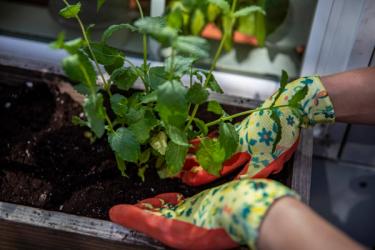
Nitrogen (N)
Nitrogen powers leaf growth and deep green color. Because it fluctuates so much, Sunday soil tests don’t test for nitrogen levels.
Sunday Tip:
If plants look pale or stunted, WonderFert All-Purpose can help. WonderFert contains slow-release nitrogen for sustained growth and readily available nitrogen for faster results.
Phosphorus (P)
Phosphorus encourages strong roots, flowers, and fruit. While Sunday intentionally limits phosphorus in lawn soils - it's a much-needed nutrient for growing gardens.
- Low: Add flower or veggie plant food for extra support. The combination of instant and slow-release nitrogen also aids overall plant vigor.
- Healthy: You're killing the soil phosphorus game. Simply maintain your current feeding routine.
- High: Skip phosphorus-rich fertilizers for now. Opt for Soil Boost instead- a 0-0-0 NPK product, so it doesn’t add any phosphorus!
Potassium (K)
Potassium aids in stress tolerance and fruit quality.
- Low: Use liquid plant food high in potassium to raise K levels in your soil over time and promote resilient growth.
- Healthy: You're a-o...K. Continue your routine garden feeding plan and opt for lower K Flower & Bloom Plant Food Mix.
Secondary nutrients
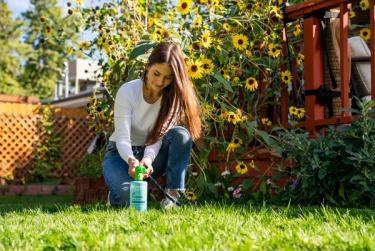
Calcium (Ca)
Calcium strengthens cell walls and helps prevent blossom end rot in tomatoes.
Low: Focus on good watering practices and providing steady calcium during fruit development. To tackle low calcium, use a combo of the following:
- Flower & Rose Organic Garden Nutrients
- Tomato & Veggie Organic Garden Nutrients
- Organic Soil Boost
- Tomato Blossom Spray
Not Limiting: Maintain good watering practices to ensure plants can take up the calcium in the soil. Add a watering of Soil Boost every now and then.
Magnesium (Mg)
Magnesium powers photosynthesis and healthy leafy growth.
Low: Consider supplemental magnesium for fast improvement like All Purpose Organic Garden Nutrients or Veggie & Tomato Organic Garden Nutrients.
Not Limiting: Your plants are getting what they need! Maintain your current practices and add a dose of Soil Boost every now and then.
Sulfur (S)
Sulfur supports strong plant growth and helps with nutrient absorption.
Low: Consider sulfur supplements for fast improvement like All Purpose Organic Garden Nutrients or Veggie & Tomato Organic Garden Nutrients.
Not Limiting: Keep up your good practices. Maintain your current practices and add a dose of Soil Boost every now and then.
Simple actions to improve your garden soil
- Tackle long-term issues first. Tackle any extreme pH imbalances, very low organic matter, or major nutrient deficiencies first. Be patient - sometimes these issues take time to fix.
- Build organic matter. Compost, leaf mulch, and soil conditioners pay off in the long run.
- Boost soil before fertilizing. This helps your soil store and release nutrients more effectively.
- Follow a routine plant food schedule. Consistent fertilization keeps nutrient levels balanced and avoids spikes or nutrient shortages.
- Observe and adjust. Pay attention to plant growth and symptoms. And always feel free to tweak your approach as needed.
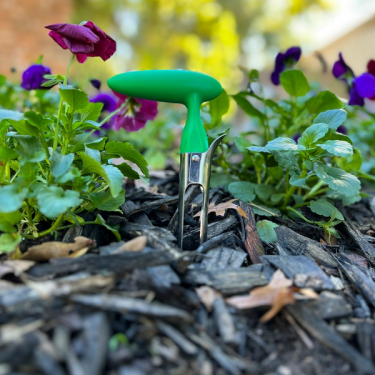
If you’re unsure where to begin, tackle your biggest soil challenges first - like extreme pH or very low nutrient levels. These can take time to address but can have a BIG impact in the long term.
Pro tips for advanced gardeners
Track your soil over time
Take soil samples every 1-2 years or anytime you start a new garden area or make a big change to your plantings. Aim for around the same time of year (every spring or every fall) when you sample. This will help you track your soil changes and adjust your garden practices as needed.
Segment your garden
If you manage different garden beds differently (veggie garden, flower beds, or full landscape plantings), we recommend testing these separately to fine-tune your gardening practices based on various plant needs.
Consider cover crops
Legumes and other cover crops can naturally boost nitrogen and organic matter, improve structure, and enhance soil biology.
Track your garden progress
Track how your plants respond to fertilizer, liquid compost, or pH adjustments. Detailed notes help you refine your approach every season.
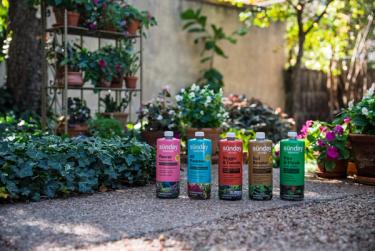
We're rooting for you
We’re here to help! Reach out anytime or explore our garden resources if you have questions about your soil test or want more details on our recommendations.
Gardening is one of the greatest joys to bring to your backyard, and we’re excited to partner with you on this journey.
Let's get growing
Unlock your shortcut to a dreamy backyard with complete lawn, garden and pest care - all in one place.











